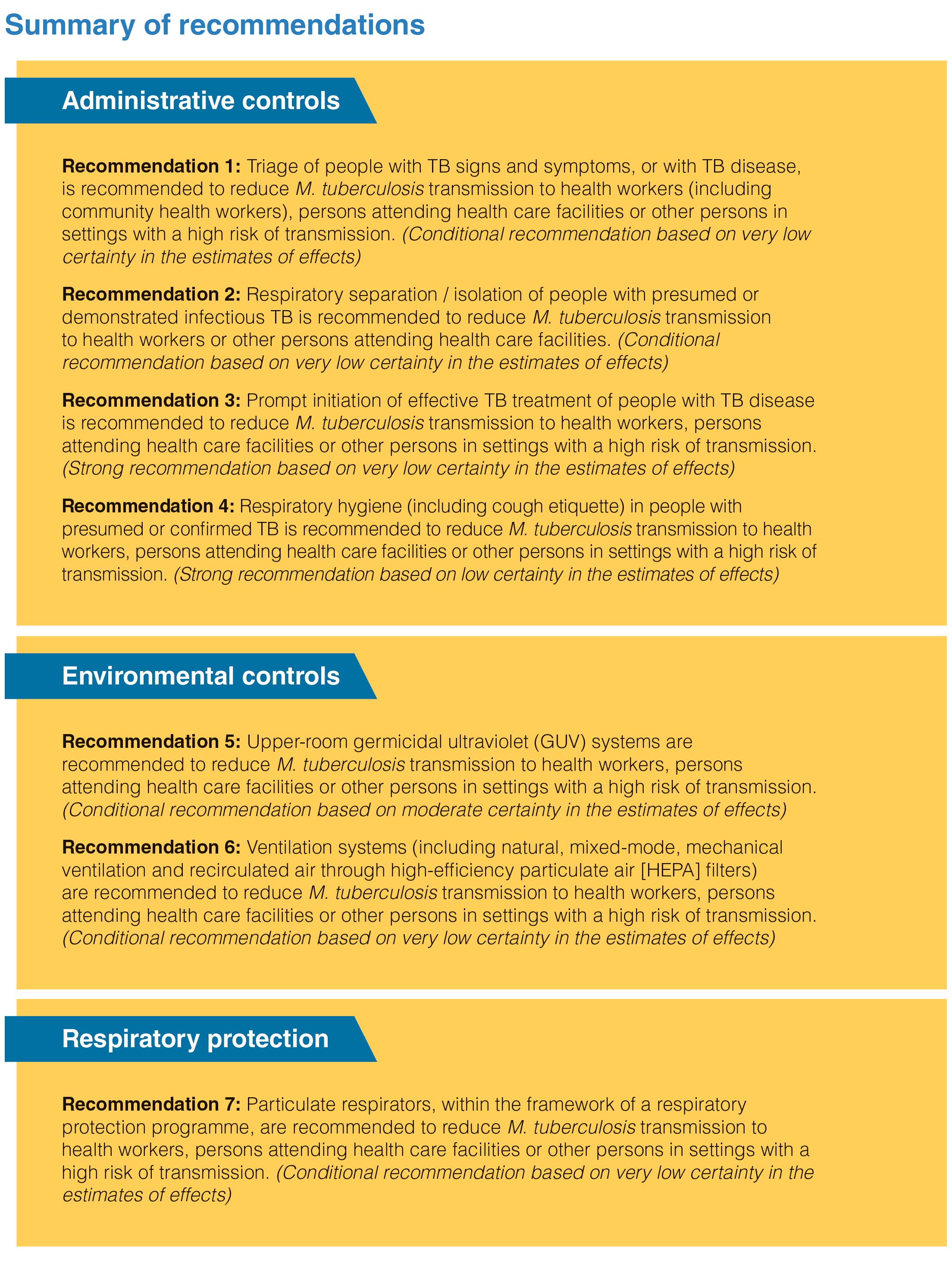2.2. Environmental controls
To reduce the risk of transmission of M. tuberculosis, air can be made less infectious through the use of three principles: dilution, filtration and disinfection. Environmental controls are aimed at reducing the concentration of infectious droplet nuclei in the air. This is achieved by using special ventilation systems to maximize airflow rates or filtration, or by using germicidal ultraviolet (GUV) systems to disinfect the air.
 Feedback
Feedback